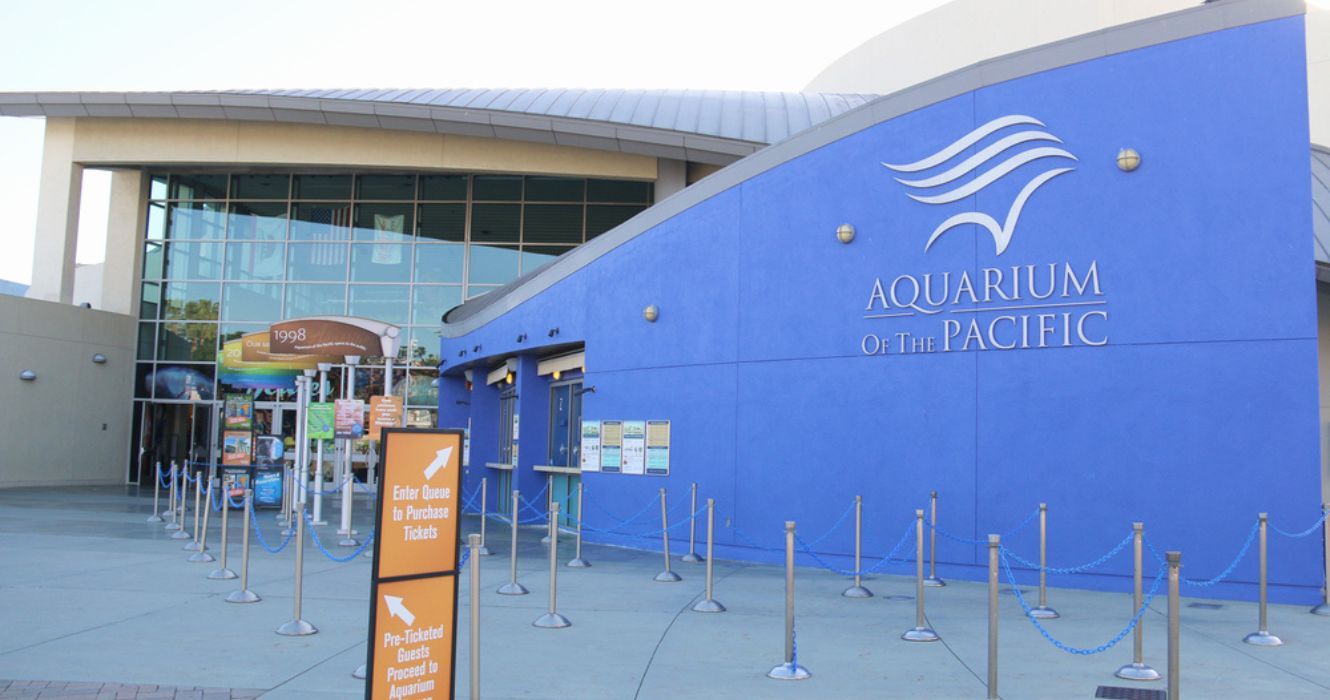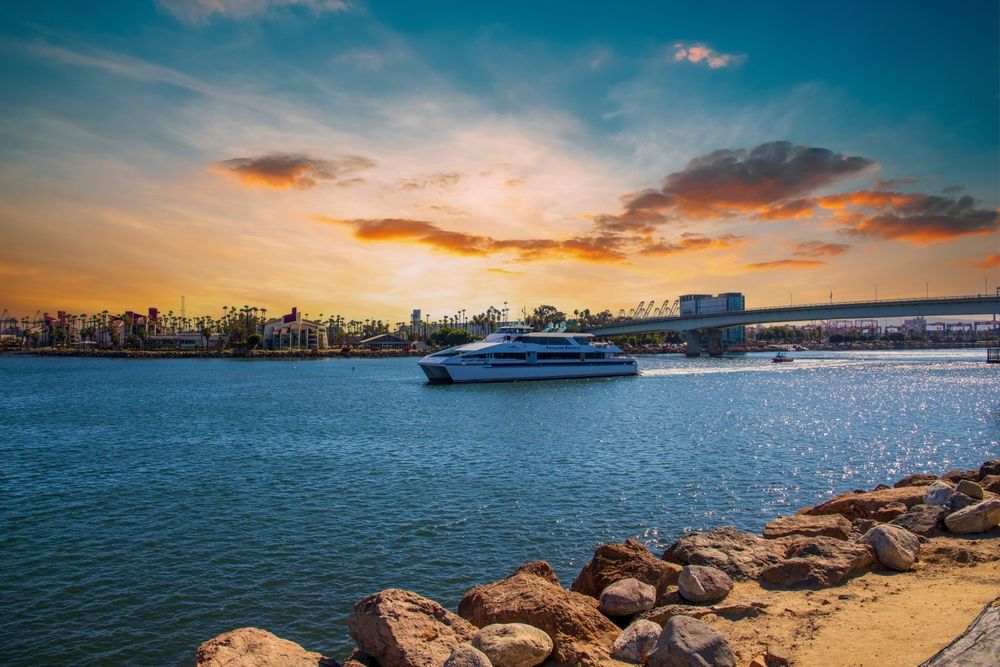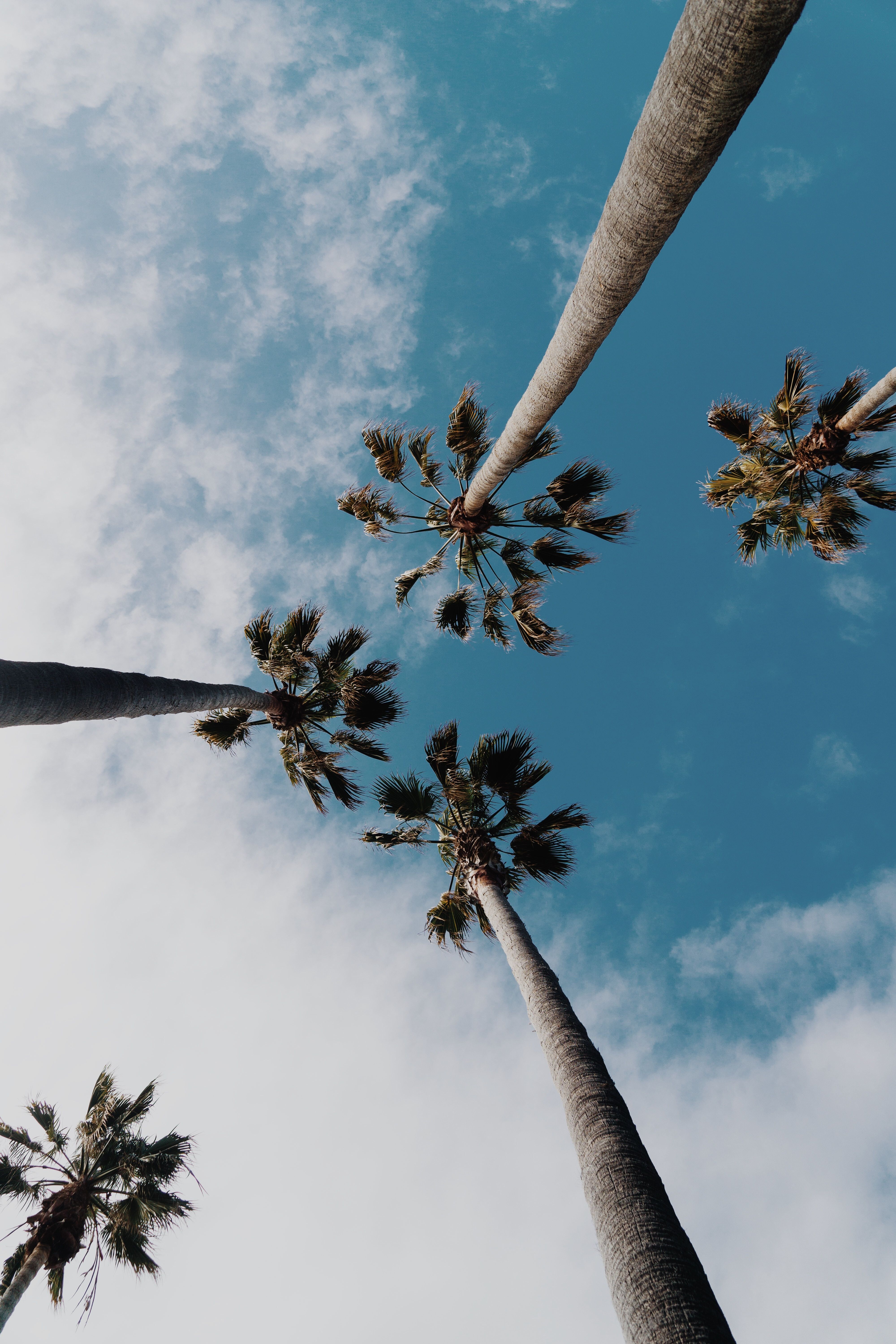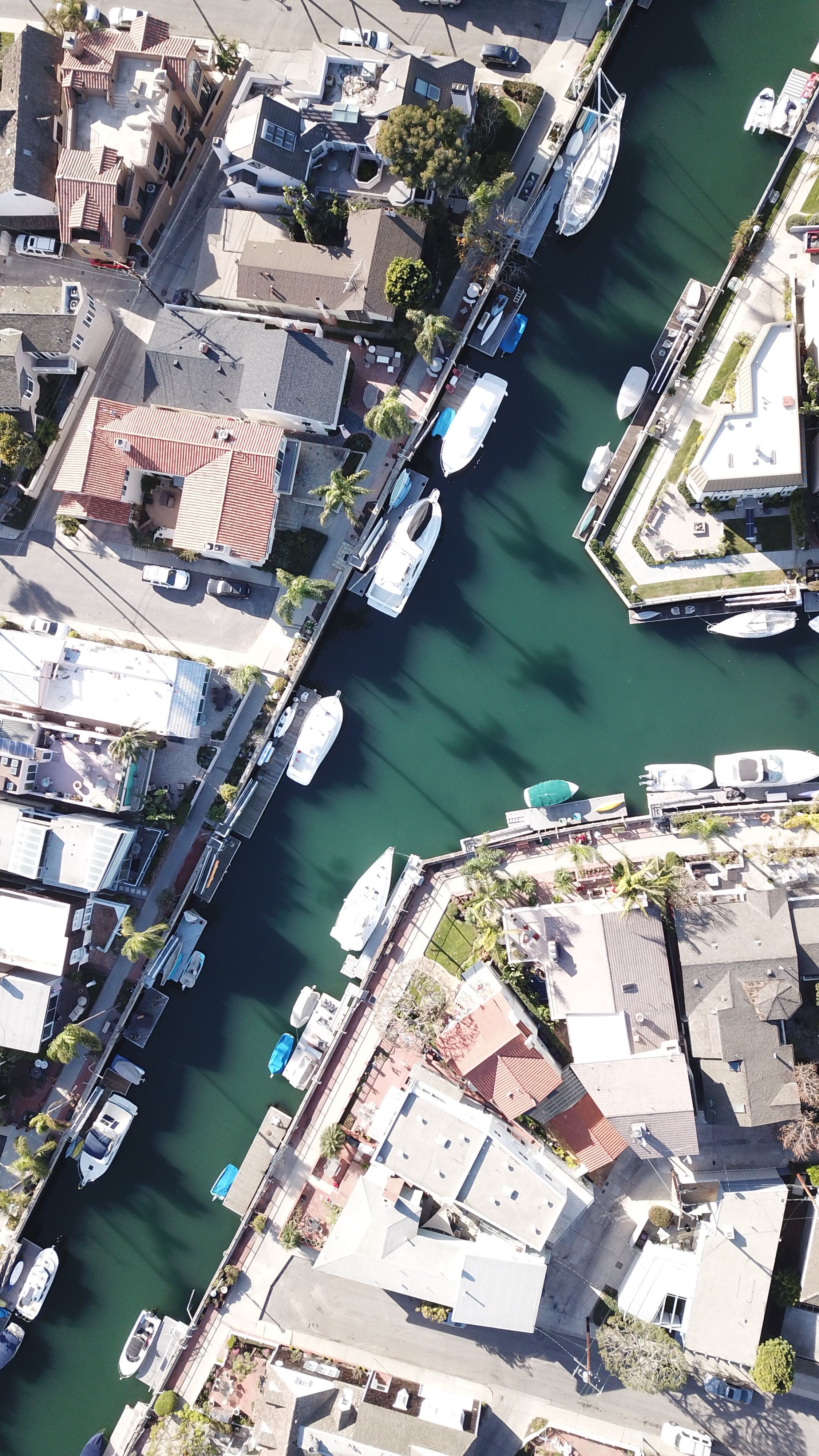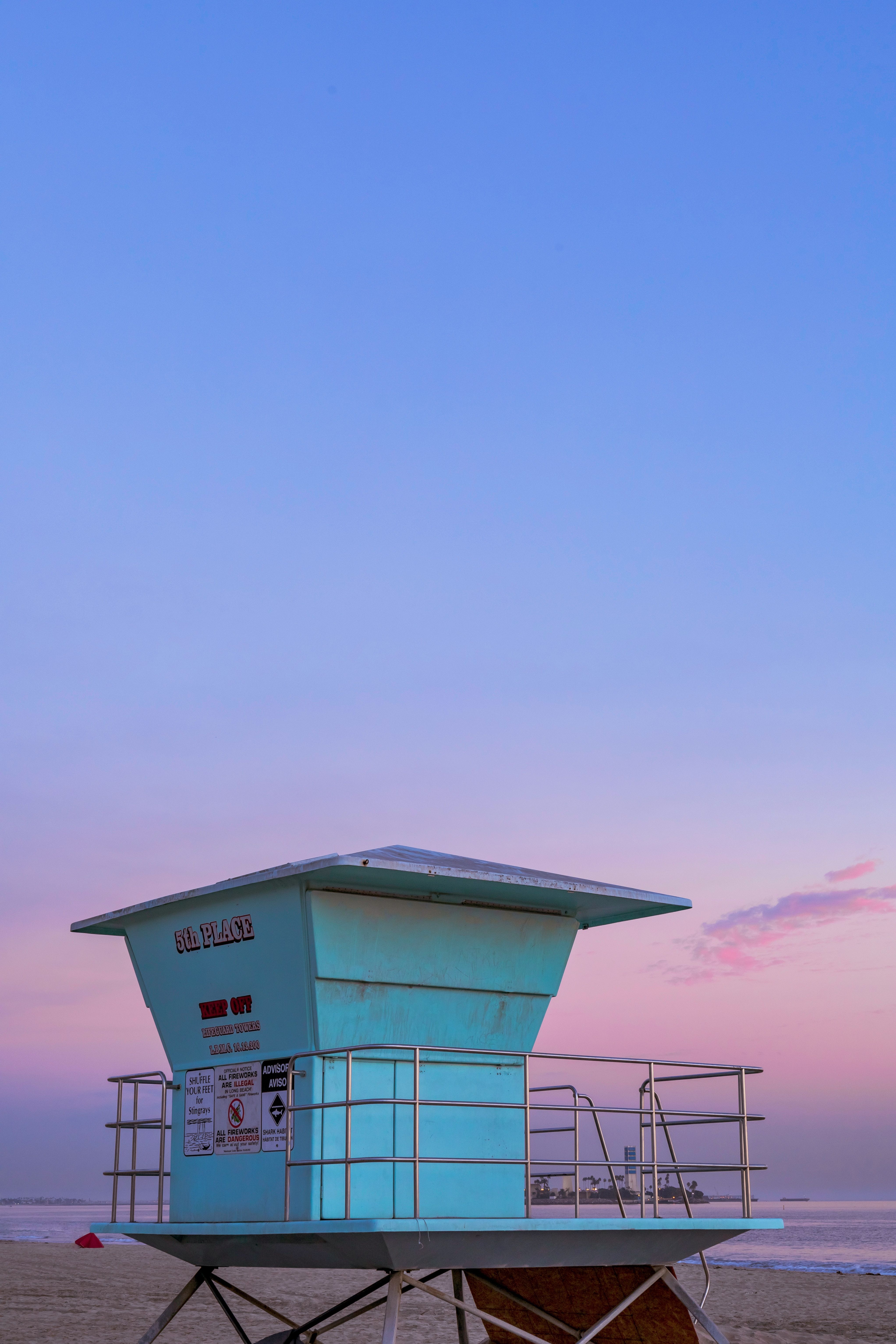Read update
- Why It's Worth Visiting The Aquarium Of The Pacific This Fall
Quick Links
Summary
- The Aquarium of the Pacific is more than just an aquarium, with a 14,000-square-foot animal care center and diverse exhibits and educational opportunities.
- Visitors can explore the Shark Lagoon, featuring various shark species, and learn about their role in the ocean's food chain.
- The aquarium also has exhibits on tropical reef creatures and aquatic life along the Baja Peninsula, offering a travel to the tropics experience. Plus, visiting in the fall means pleasant weather and fewer crowds.
With 100 exhibits and 12,000 animals, it's no wonder that the Aquarium of the Pacific attracts 1.7 million visitors each year. Located on Rainbow Harbor in Long Beach, California, the aquarium is all about the marine life of the Pacific Ocean, including the animals that thrive in the cold waters of the northern Pacific, in the warm Southern California/Baja region, and across the coral reefs of the tropical Pacific.
One enticing exhibit for 2022 is called “Babies,” where visitors can see baby animals and learn about how they are cared for at the aquarium. Located in a gallery in the Pacific Visions section of the aquarium, visitors can see and learn about the ocean habitats that function as nurseries for baby animals, such as mangroves, coral reefs, and seagrass beds. The exhibit also illustrates the special care that babies receive at the aquarium, from hand-feeding baby birds to rehabilitating stranded sea otter pups.
UPDATE: 2023/08/16 16:42 EST BY NOAH STAATS
Why It's Worth Visiting The Aquarium Of The Pacific This Fall
This article has been refreshed with new information regarding a trip to the Aquarium of the Pacific in Long Beach, California. Whether someone wants to explore a reef, learn more about coastal waters, or even get up close and personal with a shark: this complex is worth the visit. Not to mention the beautiful fall conditions throughout Southern California: have fun!
The Aquarium Of The Pacific Is More Than Just An Aquarium
- This aquarium boasts a 14,000-square-foot animal care center.
- It's larger than the famed Monterey Bay National Marine Sanctuary.
The Aquarium of the Pacific is much more than its name implies, and it's larger and more diverse than the Monterey Bay National Marine Sanctuary area. Besides its dozens of exhibits, it offers a wide range of educational opportunities, such as lectures and interactive experiences. It operates its own aquatic life veterinary program, the 14,000-square-foot Molina Animal Care Center, for injured and sick marine life. As part of its interactive learning programs, the center allows visitors to watch surgeries and animal examinations and sometimes talk to the aquarium’s veterinary staff.
The aquarium also functions as a coral rescue facility. According to the aquarium, the U.S. Fish and Wildlife Service sometimes confiscates illegally traded live corals, and the Aquarium of the Pacific provides a home for some of these corals in its exhibit galleries.
In addition, each year, the aquarium hosts art exhibits, performances, and cultural festivals and presents a guest speaker series featuring scientists and experts focused on ocean and environmental issues. And the aquarium sometimes takes its show on the road with its Aquarium on Wheels program. Staff transport a tide pool habitat to festivals and fairs in Southern California and into school classrooms.
Aquarium Hours And Entry Costs
- Adults: $36.95
- Children 3 to 11: $26.95
- Seniors 62-plus: $33.95
- Special activity add-ons are available, such as the Blue Whale Watch and Sea Life Cruise for $70.95 for adults, $56.95 for children, and $67.95 for seniors.
- Operating Hours: Monday–Sunday, 9 a.m.–6 p.m. Daily except for Christmas Day
These are ten scenic drives for those road-tripping through California.
See The Shark Lagoon And Other Natural Habitats
- This aquarium hosts a 10,000-square-foot shark lagoon.
- Guests can spot various reef shark species here.
Visitors to the 10,000-square-foot Shark Lagoon can enjoy fascinating underwater views of many kinds of sharks, including zebra and gray reef sharks, white-spotted bamboo, and epaulet sharks swim in shallow touch pools, where visitors can reach into the pools and gently touch the animals.
Displays in this aquarium section tell visitors about how big sharks are, how they reproduce, and their role in the ocean's food chain. Aquarium staff members give daily presentations, and visitors can watch the sharks being fed.
In the aquarium's Northern Pacific Gallery, visitors will find animals like otters and the giant Pacific octopus (weighing more than 100 pounds), and other creatures that live in the chilly Bering Sea, which covers some 800,000 miles between the Aleutian Islands, Alaska, and Siberia. This region is home to nearly 500 species of fish, plus 50 different bird species and two dozen types of marine mammals. The gallery has 16 exhibits. Visitors can see sea jellies, sea otters, and many other animals.
The June Keyes Penguin Habitat is home to 20 Magellanic Penguins and features what the aquarium calls a crawl-in space, which visitors can access to feel like they are in the exhibit with the penguins.
Along with rocks, a beach, a pool, and nesting areas for the penguins, the exhibit has touch screens that provide details about the animals and the challenges they face in the wild.
Travel To The Tropics With Two Aquarium Exhibits
- The Aquarium of the Pacific offers an extensive exhibit on tropical reef creatures.
- This area focuses on the waters surrounding Palau, Micronesia, and Southern California.
Warm water aquatic life is the focus of the aquarium's Tropical Reef Habitat, focused on the waters around Palau, Micronesia, and the Southern California/Baja Gallery. The Tropical Reef Habitat is seen from three locations in the gallery and is the aquarium’s largest exhibit, with 350,000 gallons of water. Visitors will see more than 1,000 colorful fish and coral, plus sea turtles, zebra sharks, porcupine puffers, and other warm-water marine life. Daily dive and feeding presentations are held, and visitors will learn about fish with camouflage and defense capabilities.
The Southern California/Baja Gallery showcases aquatic life along the Baja Peninsula, between the Pacific coast of Mexico and the Sea of Cortez. Baja has many bays, lagoons, and kelp and mangrove forests, and the animals that live in those habitats and along the Southern California coast are featured in 18 exhibits (no passport needed!).
Giant spined sea stars and California scorpionfish are featured, along with butterflyfish and Mexican lookdowns. The gallery also includes the aquarium's Seal and Sea Lion Habitat and has Shorebird Sanctuary and Wetlands exhibits.
Why It's Worth It To Come To See The Aquarium Of The Pacific This Fall
- Long Beach weather is pleasant through the fall.
- There will be less traffic and people at the Aquarium of the Pacific during the autumn months.
For anyone needing ideas for a fall vacation, heading to the Aquarium of the Pacific is certainly worth considering. First, the Southern California weather will be absolutely magical, boasting mild 70-80-degree days through early to mid-fall. From there, temps drop to cooler averages around October and November, making for sweater weather. Luckily, much of this aquarium is indoors, which makes it perfect for cold or hot days in Long Beach.
Furthermore, the Aquarium of the Pacific tends to slow down once school starts back up throughout California, placing autumn in a nice "quiet" period for travelers. That gives guests more time to enjoy their surroundings without waiting in lines. Traffic will be better in the fall in Long Beach, too, as not as many eager beachgoers head into town. Regardless, this is a place people can't miss when in the Golden State and is a great learning opportunity for all ages. Southern California is one of the most beautiful areas in the United States: so don't be afraid to explore!
These ten West Coast road trip routes are also perfect for viewing fall foliage.

